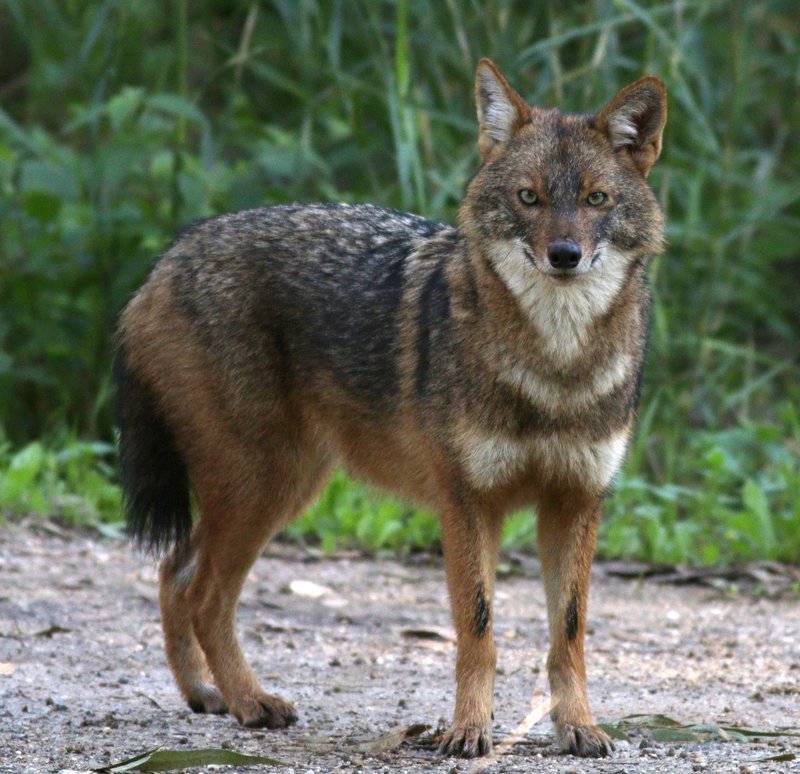
Like a character in a novel, the golden jackal wears different hats depending on the story being told. In some cultures, it’s a symbol of cunning and survival, while in others, it represents loyalty and adaptability. Let’s dive into how this intriguing animal is woven into the tales and beliefs of different societies. By the end, you’ll see how the golden jackal is more than just a wild creature; it’s a reflection of cultural values and human imagination.
The Golden Jackal in Ancient Mythology
In ancient Egypt, the golden jackal held a place of honor. It was closely associated with Anubis, the god of the afterlife, who was often depicted with a jackal’s head. Think about it: in a culture that placed immense importance on death and the afterlife, having a celestial being associated with a scavenger animal spoke volumes about how they viewed life and death. The jackal was respected for its role in the ecosystem, scavenging the remains of the dead and thus, ensuring a cleaner environment.
Moreover, the jackal’s nocturnal habits made it a fitting symbol for the mysteries of the night. Just like how Anubis guided souls through the darkness, the golden jackal mirrored that journey as it roamed the shadows of the desert. Each time the ancient Egyptians looked upon a jackal, they saw more than just an animal; they saw a guardian of the afterlife.
Folklore Tales from Around the World
Moving beyond Egypt, various cultures have their own unique stories about golden jackals. In Indian folklore, for instance, these animals appear in many fables and stories, often as clever protagonists. One popular tale sees a golden jackal outsmarting a lion, showcasing intelligence over brute strength. This not only entertains but also imparts a valuable lesson: brains can sometimes outmatch brawn.
In many of these stories, the jackal symbolizes adaptability and survival skills. It thrives in various environments—from deserts to forests—representing the ability to overcome challenges. As you read these tales, you can’t help but think about your own life challenges. Isn’t it comforting to think that, like the jackal, you can find a way to thrive against the odds?
Symbolism in African Cultures
In African cultures, the golden jackal is often seen as a trickster, much like the coyote in Native American folklore. These stories reveal a creature that embodies the dual nature of cunning and mischief. The golden jackal can be both a friend and a foe, leading to unexpected outcomes. In one tale, a jackal cleverly tricks larger animals into doing its bidding, teaching listeners that intelligence is a powerful tool.
Moreover, the jackal’s adaptability mirrors the resilience of the communities that tell these stories. Just as the jackal thrives in various landscapes, so do the people who live there. The tales serve as a reminder that cleverness and resourcefulness can lead to success, no matter the difficulties faced.
Cultural Representations in Art and Literature
The golden jackal also finds its way into the art and literature of various cultures. In Indian art, for instance, you might see jackals depicted in vibrant murals that tell stories of their cleverness—a recurring theme in Indian storytelling. Artists often use these portrayals to convey deeper meanings about life and survival.
In literature, the golden jackal appears in various forms, often as a character embodying traits of cunning and trickery. These stories can be found in collections like the Panchatantra, where animals engage in moral lessons through their actions. Each tale acts as a metaphor for human behavior, and the jackal often serves as a reminder of the complexities of life.
Modern Views and Conservation Efforts
Today, the golden jackal is not just a figure in folklore; it’s also an important part of our ecosystem. As humans have encroached on their natural habitats, understanding the roles these animals play can inform our conservation efforts. In some regions, jackals have adapted to urban environments, demonstrating their resilience.
However, with this adaptability comes challenges. As we shift landscapes and ecosystems, we must also think about how we perceive these creatures in modern culture. Conservation efforts aim not only to protect the golden jackal but also to educate people on its significance in our world. By blending traditional folklore with modern environmental concerns, we can create a narrative that honors the past while looking toward the future.
The Golden Jackal as a Reflection of Human Nature
When you look at how the golden jackal is represented in culture, it’s like holding up a mirror to human nature itself. Many stories about jackals highlight traits we can all relate to: cleverness, adaptability, and the desire to survive against the odds. You might find yourself wondering—aren’t we all a bit like the golden jackal at times? Navigating life’s challenges, using our wits, and finding ways to thrive?
This connection between the golden jackal and human experience makes these stories timeless. They remind us that just as the jackal adapts and survives, so too can we. The lessons learned from folklore about resilience, intelligence, and morality resonate throughout time, showing us that the wisdom of our ancestors still has relevance today.
As we wrap up our journey into how the golden jackal is represented in culture and folklore, it becomes clear that this animal is more than just a wild creature. It serves as a symbol of intelligence, adaptability, and resilience across various cultures. Its stories remind us of the intrinsic qualities we value and the lessons we carry through generations.
Understanding the golden jackal in this way enriches our knowledge of both nature and human culture. It invites us to reflect on our connections to the world’s wildlife and each other. So, the next time you see a jackal or hear its stories, remember that beneath the surface of its cunning exterior lies a wealth of wisdom waiting to be discovered.

